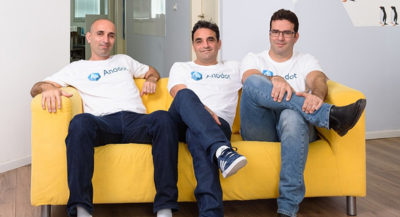Blog Post
6 min read
A Guide to Autonomous Monetization Monitoring for the Gaming Industry
Similar to other companies in the entertainment industry, gaming companies typically drive revenue from three sources: in-app purchases, ads, and subscription. A couple of examples of these sources include creating different in-app purchase options for each game and various ad units from multiple ad networks.
While this diversity in revenue streams may be advantageous from a business perspective, from a technical standpoint, it creates numerous challenges. In particular, every time an in-app purchase fails, an ad isn’t displayed correctly, or a user isn’t converted to a paying customer, revenue is lost.
Navigating Permutational Complexities
Experienced game developers understand each one of their games’ permutational complexities—from the operating systems, user segments, multiple devices, promotional strategies, and more.
Each one of these permutations not only presents unique technical challenges but also must be monitored constantly in order to prevent monetization failures.
The Limitations of Traditional Monitoring
In the past, many companies have tried traditional monitoring and alerting methods, but the inherent complexities mentioned above often make this unfeasible. Either these dashboards and manual thresholds will miss an anomaly because it is too granular, or the system will generate too many false positives.
As we’ll discuss in this guide, autonomous AI-based proactive monitoring is the solution to dealing with the complexities of gaming analytics.
What is Autonomous Monetization Monitoring?
As mentioned, proactive monitoring revenue streams of gaming companies often involves tracking thousands of metrics and billions of events each day.
Autonomous monitoring allows you to not only observe each individual metric but also automatically learn the normal behavior of each on its own by using a branch of machine learning called unsupervised learning.
As described in our guide on Unsupervised Anomaly Detection:
Unsupervised machine learning algorithms, however, learn what normal is, and then apply a statistical test to determine if a specific data point is an anomaly. A system based on this kind of anomaly detection technique is able to detect any type of anomaly, including ones that have never been seen before.
In other words, unsupervised learning can be used to monitor 100% of the data, identify anomalies that lead to revenue losses, and alert the relevant team in real-time. Keep in mind that none of these alerts are threshold-based, and instead are constantly changing on their own based on the learned normal behavioral patterns.
Similarly, each anomaly is paired with a root-cause analysis of incidents that affect revenue streams or the user experience. This allows the technical team to identify what’s causing the incident and have the fastest possible time-to-resolution.
In the context of gaming, Anodot’s autonomous monitoring solution has proven to reduce up to 70% of losses associated with monetization errors for game studios such as King, Gamesys, Outfit7, Moonactive, and more.
To do this, the AI-based solution monitors three core monetization channels, including:
In-app purchases
Ads
Subscriptions
Now that we’ve discussed what autonomous monetization monitoring is, let’s look at several real-world examples.
Use Case: Autonomous Monitoring for Gaming
In this section, we’ll review two use cases of autonomous monitoring for gaming: in-app purchases and drops in ad impressions.
Monitoring In-App Purchase Funnels
One particular game studio started using autonomous monitoring for its monetization of in-app purchases. Here are a few highlights from their experience:
In just the past 6 months, 57 anomalies triggered alerts in real-time based on spikes of purchase failures
These purchase failures resulted from various technical bugs, version updates, payment gateway issues, and more
With the use of the AI-based correlation analysis, the team was able to remediate the issues within hours instead of days
They’ve estimated that because of their faster time-to-resolution, they were able to save $800k in the past 6 months
Below, you can see three of the purchase failure rate metrics which are measured by different games, platforms, and versions. The shaded blue area represents the normal range of each metric and each one of the anomalies from this normal behavior is highlighted in orange. As you can see, as the normal range shifts over time, the purchase fail metrics also shift automatically by Anodot’s algorithms. During the same period, there were a total of 64 purchase failure related alerts, which means the detection rate was 92%.
Real-Time Alerts on Drops in Ads Shown
Another example of autonomous monitoring for gaming comes from a game studio that has over 500 million monthly active users (MAU). In this case, the company wanted to monitor ad impressions presentations in their games, which is of course tied to the bottom line of the company.
Here are a few highlights from their experience implementing autonomous monitoring:
In the past 6 months, 18 alerts were triggered indicating a drop in ad impressions across various games, platforms, and ad networks
17 of the 18 alerts were confirmed to be significant revenue impactful incidents, making the detection rate 94.4%
The company estimates that they saved $153K USD based on detecting and resolving these 17 incidents in near real-time
As you can see below, the blue shaded area represents the normal ad impression range. Here you can see the drop in the ads shown occurred for multiple games and platforms, apart from a single ad provider (Facebook). These anomalies were not only alerted in real-time but were also correlated with a single alert resulting in a faster remediation time and avoiding an alert storm.
Summary: Autonomous Monetization Monitoring
As we’ve discussed, monitoring the various revenue streams of gaming companies is a highly complex undertaking.
While experienced developers understand each one of their game’s permutational complexities, monitoring them in real-time still presents a unique challenge.
Some companies have tried using manual thresholds in the past, but this either doesn’t have enough granularity or will be triggered based on false-positives, leaving the technical team with an alert storm.
Instead, AI-based autonomous monetization monitoring is the only solution that can observe every single metric, learn its normal behavior on its own, and identify anomalies in real-time. Not only does catching and resolving these anomalies drastically enhance the user experience but ultimately it helps companies improve their bottom line.
Read more









